Pixel 9a vs Pixel 8: Does the old flagship stand a chance?
We may earn a commission if you make a purchase from the links on this page.
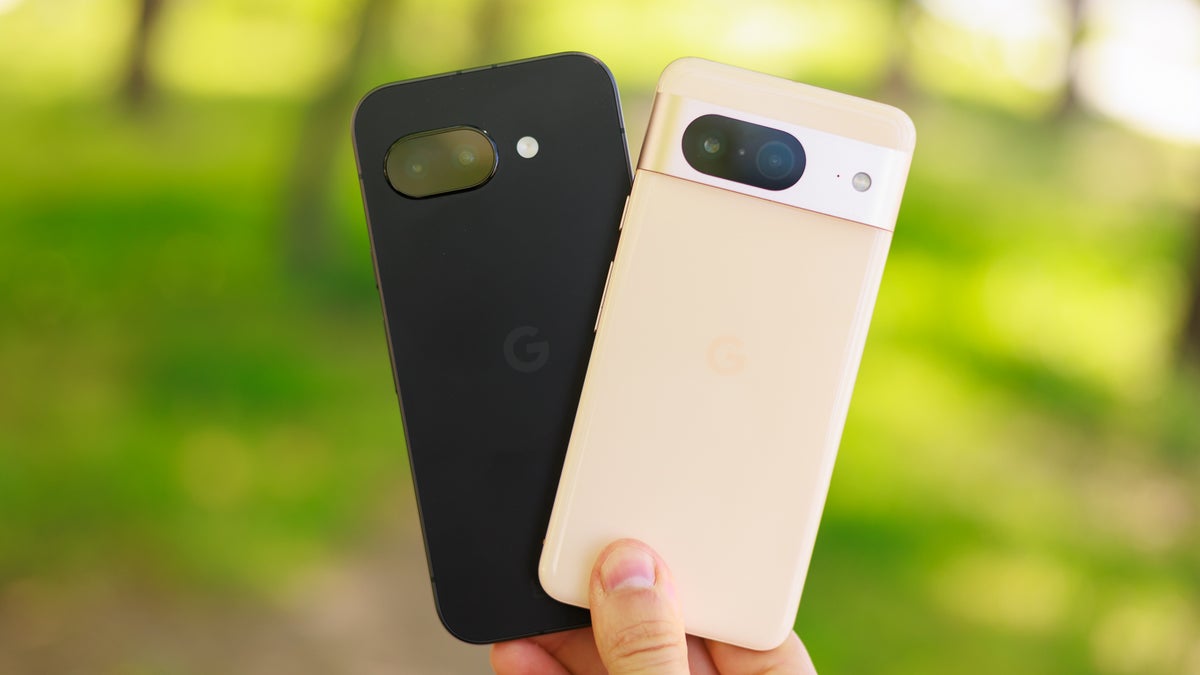
Intro
The Pixel 9a is now official and given how successful the A-series Pixels have been this launch begs one question. Do old flagships stand a chance against this new, affordable, and quite exciting model?
Today we're going to pit the Pixel 9a against the previous generation of Pixel flagships in the face of the vanilla Pixel 8. The Pixel 8a already undermined the foundations of the regular Pixel 8, and now we have another bargain phone that's even better. Could the Pixel 8 survive the attack? Let's try and find out!
Here's our Google Pixel 9a vs Pixel 8 comparison.
Pixel 9a vs Pixel 8 differences:
| Pixel 9a | Pixel 8 |
|---|---|
| Slightly larger device but not heavier | A tad more compact, very similar weight |
| The new flat sides and frame design, with a oval camera bump | The old rounded design with the Camera Bar |
| Bigger 6.3-inch OLED, FHD+ resolution, 120Hz, 2700 nits peak brightness | Smaller 6.2-inch display, similar resolution, 120Hz, 2000 nits peak brightness |
| Android 15 out of the box, seven major OS updates (up to 2032) | Android 14, seven major OS updates (October 2030) |
| The latest Tensor G4 chipset with the latest AI instructions onboard | Using the older Tensor G3 processor, potentially not that futureproof |
| Two cameras - a 48MP main sensor and a 13MP ultra-wide | Dual camera with a 50MP main and a 12MP ultrawide |
| Bigger battery at 5100 mAh delivering better battery life | Smaller 4575 mAh battery, potentially shorter battery life |
| Slightly slower charging - 23W wired 7.5W wireless | Faster wired and wireless charging - 27W and 18W respectively |
| Cheaper starting price - $499 for the 128GB version | More expensive at launch - $699 for the same storage option, deals available |
| Two storage options - 8GB/128GB and 8GB/256GB | The same storage and RAM options |
Table of Contents:
Read more:
Design and Size
Is plastic that bad?
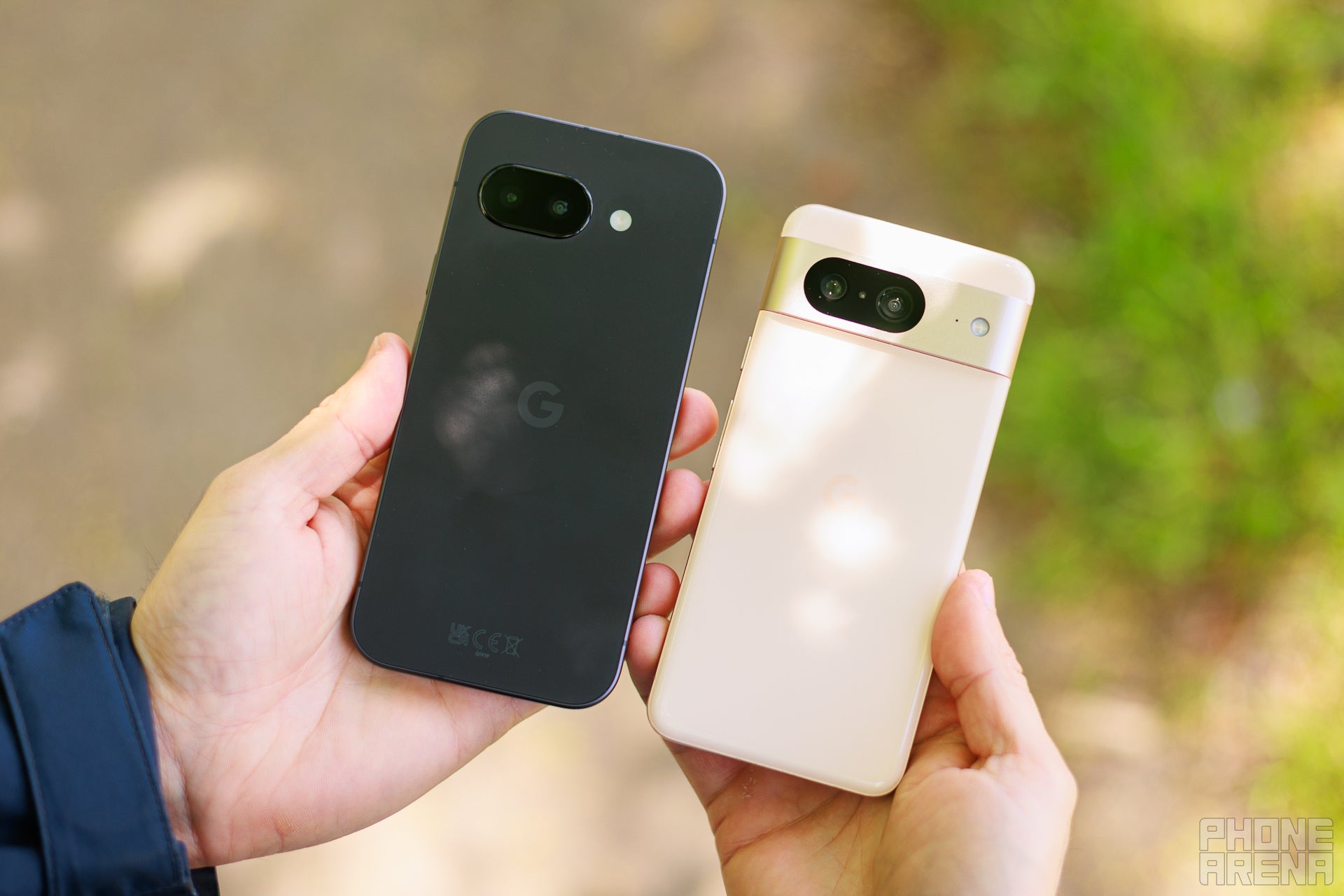
The Pixel 9a takes cues from the regular Pixel 9 series. It has a flat screen and back and also a flat frame. In contrast, the Pixel 8 still employs the slightly curved back and the Camera bar that Google first launched back with the Pixel 6.
The big design difference is the oval-shaped camera housing on the Pixel 9a, which not only looks flushed with the body (hence we can't call it a camera bump) but also gives the phone a very distinct look.
In terms of size, both phones are pretty close in dimensions, with the Pixel 9a being a tad larger due to the larger screen diagonal. Below you will find the exact dimensions and weights of both models (spoiler alert, the weight is almost identical between these two).
154.7 x 73.3 x 8.9 mm, 186 grams
Pixel 8 dimensions and weight:
150.5 x 70.8 x 8.9 mm, 187 grams
As you can see, the Pixel 8 is a couple of millimeters more compact (2.5 mm narrower and around 4 mm shorter), but the Pixel 9a is 1 g lighter. Thanks to its curvy design and the more compact dimensions, the Pixel 8 feels better in the hand. But there's another key difference worth mentioning—building materials.
The back of the Pixel 9a is made of plastic, and even though these plastic composites are quite sturdy and expensive-looking nowadays, it's still plastic. In contrast, the Pixel 8 uses glass on the back.
Let's talk colors. Both of these phones feature some really cool and fresh colors; check them all out below:
The big design difference is the oval-shaped camera housing on the Pixel 9a, which not only looks flushed with the body (hence we can't call it a camera bump) but also gives the phone a very distinct look.
In terms of size, both phones are pretty close in dimensions, with the Pixel 9a being a tad larger due to the larger screen diagonal. Below you will find the exact dimensions and weights of both models (spoiler alert, the weight is almost identical between these two).
Pixel 9a expected dimensions and weight:
154.7 x 73.3 x 8.9 mm, 186 grams
Pixel 8 dimensions and weight:
150.5 x 70.8 x 8.9 mm, 187 grams
As you can see, the Pixel 8 is a couple of millimeters more compact (2.5 mm narrower and around 4 mm shorter), but the Pixel 9a is 1 g lighter. Thanks to its curvy design and the more compact dimensions, the Pixel 8 feels better in the hand. But there's another key difference worth mentioning—building materials.
The back of the Pixel 9a is made of plastic, and even though these plastic composites are quite sturdy and expensive-looking nowadays, it's still plastic. In contrast, the Pixel 8 uses glass on the back.
Let's talk colors. Both of these phones feature some really cool and fresh colors; check them all out below:
Pixel 9a colors:
- Obsidian
- Porcelain
- Iris
- Peony
Pixel 8 colors:
- Obsidian
- Hazel
- Rose
- Mint
Display Differences
Picture perfect
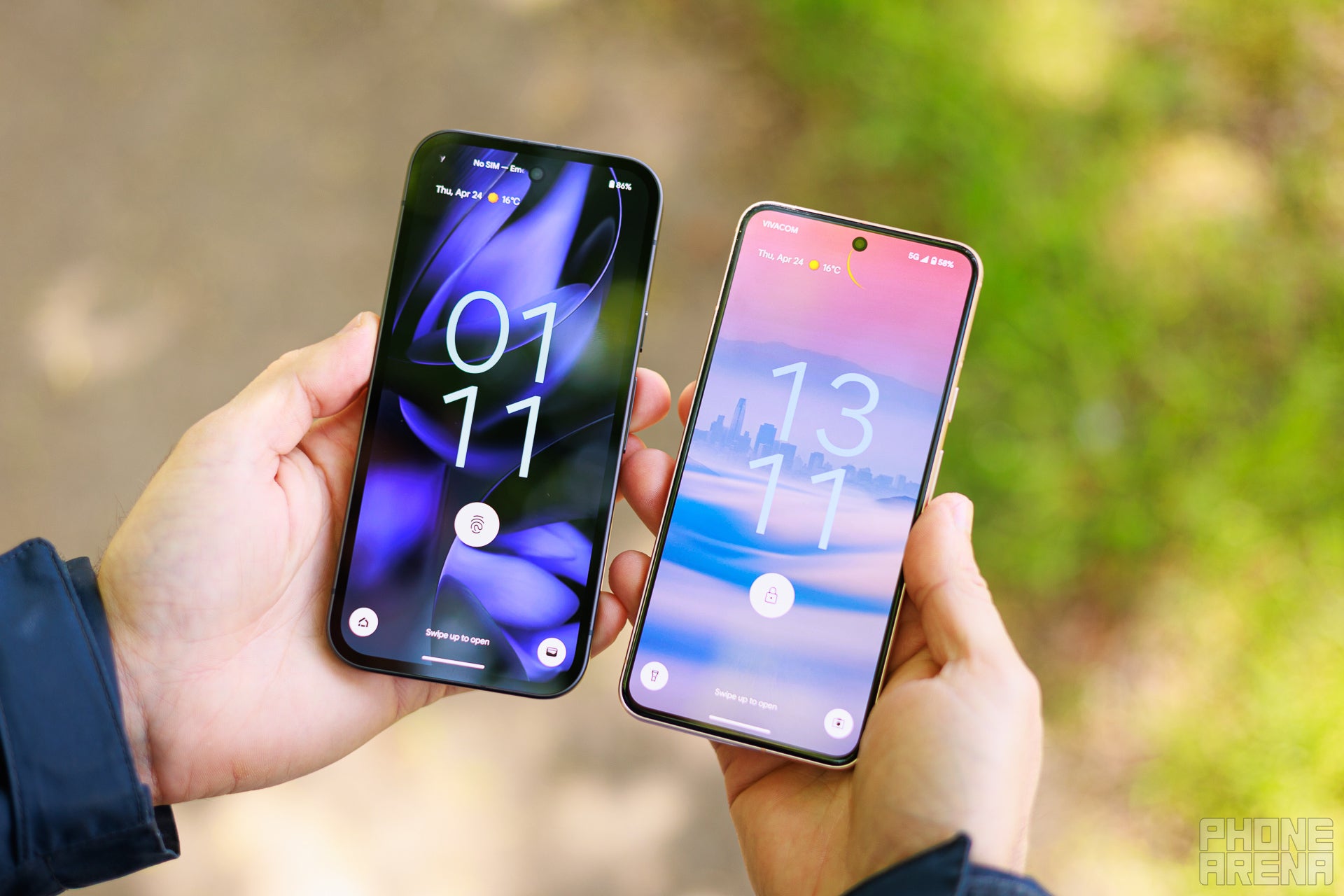
We said this before—smartphone displays are now so good that even midrange phones impress with colors, resolution, and brightness. That said, there are still differences, even between flagships. The Pixel 9a features a slightly larger 6.3-inch OLED display, with a resolution of 1080 x 2424 pixels (422 PPI), a 120Hz refresh rate, and an impressive peak brightness of 2700 nits.
On the other hand, we have the Pixel 8, which is now more than one year old, sporting a 6.2-inch OLED. The resolution is very similar at 1080 x 2400 pixels (428 PPI), and it also supports up to a 120Hz refresh rate.
On the other hand, we have the Pixel 8, which is now more than one year old, sporting a 6.2-inch OLED. The resolution is very similar at 1080 x 2400 pixels (428 PPI), and it also supports up to a 120Hz refresh rate.
Brightness figures are slightly lower; the display can output 2000 nits peak. In our test, the Pixel 8 managed 1419 nits at 100 APL (Average Picture Level), which is a great result. Let's see if those claims hold.
Display Measurements:
It seems that the panels used inside the Pixel 8 and the Pixel 9a are very similar. The only big difference here is the peak brightness, the Pixel 9a delivered on all the promises and then some. The phone managed 1915 nits at 100% APL (all white pixels lit on the display) which is an impressive result, and north of 2500 nits at 20% APL (closer to real-life conditions).
All other metrics are close between these two, color accuracy and temperature are similar, as well as minimum brightness. But there you have it, the affordable Pixel 9a outperforms the Pixel 8 in the display department.
In terms of biometrics, both phones feature the same under-display optical fingerprint scanner, so no ultrasonic upgrade on the Pixel 9a.
In terms of biometrics, both phones feature the same under-display optical fingerprint scanner, so no ultrasonic upgrade on the Pixel 9a.
Performance and Software
A Tensor battle
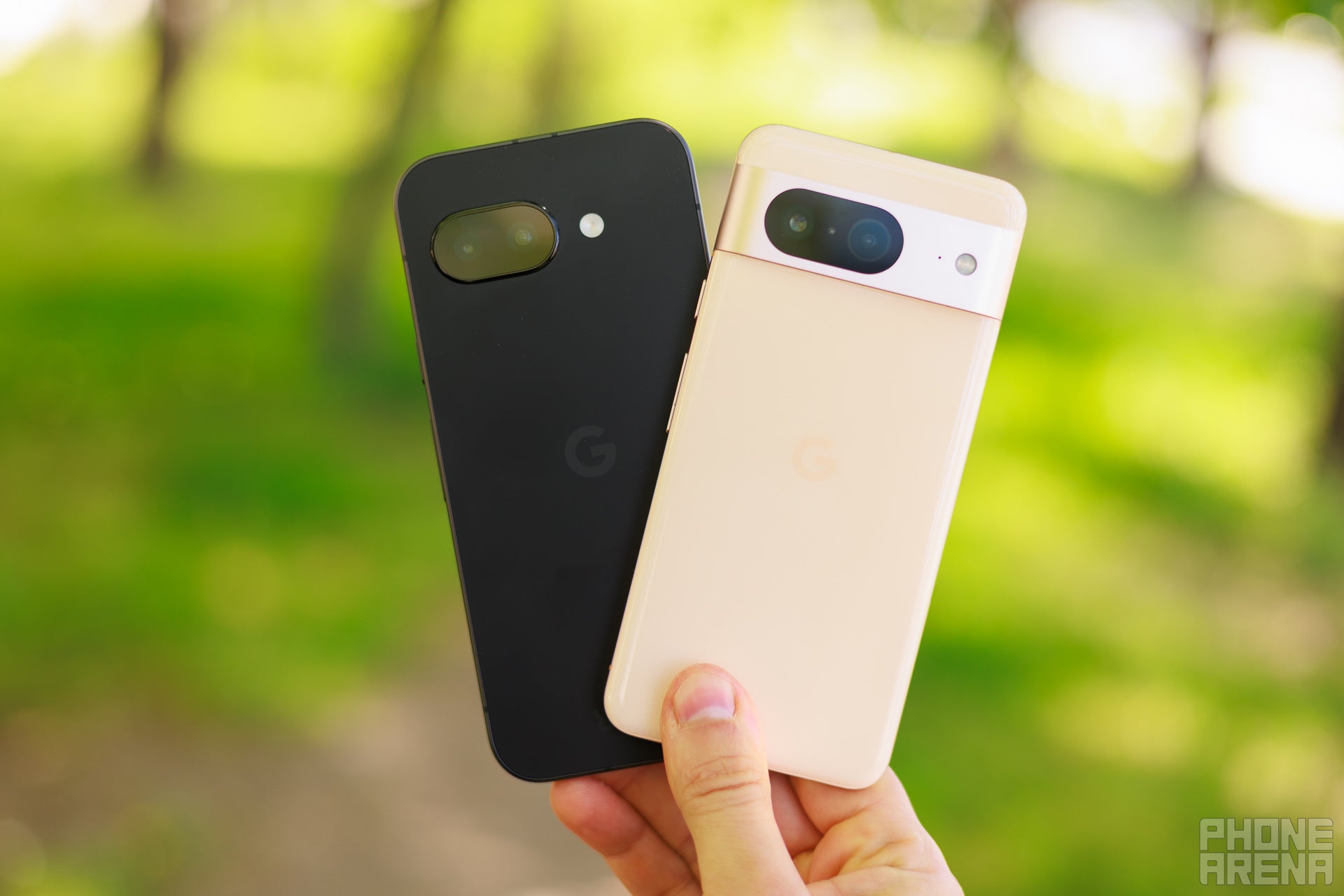
Being Google devices, both the Pixel 9a and the Pixel 8 employ the company's own in-house developed Tensor chipset. The Pixel 9a gets the latest Tensor G4, the same found inside the other flagships in the Pixel 9 family. The Pixel 8, on the other hand, comes equipped with a year-old Tensor G3 chip.
The synthetic benchmarks are below, and there's a real surprise waiting. The difference in raw performance turned out not that big, especially in the CPU department. As far as graphics are concerned, the Tensor G4 performs 10% better than its predecessor.
The synthetic benchmarks are below, and there's a real surprise waiting. The difference in raw performance turned out not that big, especially in the CPU department. As far as graphics are concerned, the Tensor G4 performs 10% better than its predecessor.
So, it's not that big of a leap when we talk about raw performance, and furthermore, the RAM and storage situation is identical. Both phones start at 8GB of RAM and 128GB of storage and offer a step-up variant with 8GB of RAM and 256GB of storage.
The same goes for the software with a tiny difference. The Pixel 9a launched with Android 15 out of the box, while the Pixel 8 already received that version as an update. And being a newer device, the Pixel 9a will be supported for longer, even though technically both phones feature 7 years of major OS updates.
Camera
Two eyes, different sights
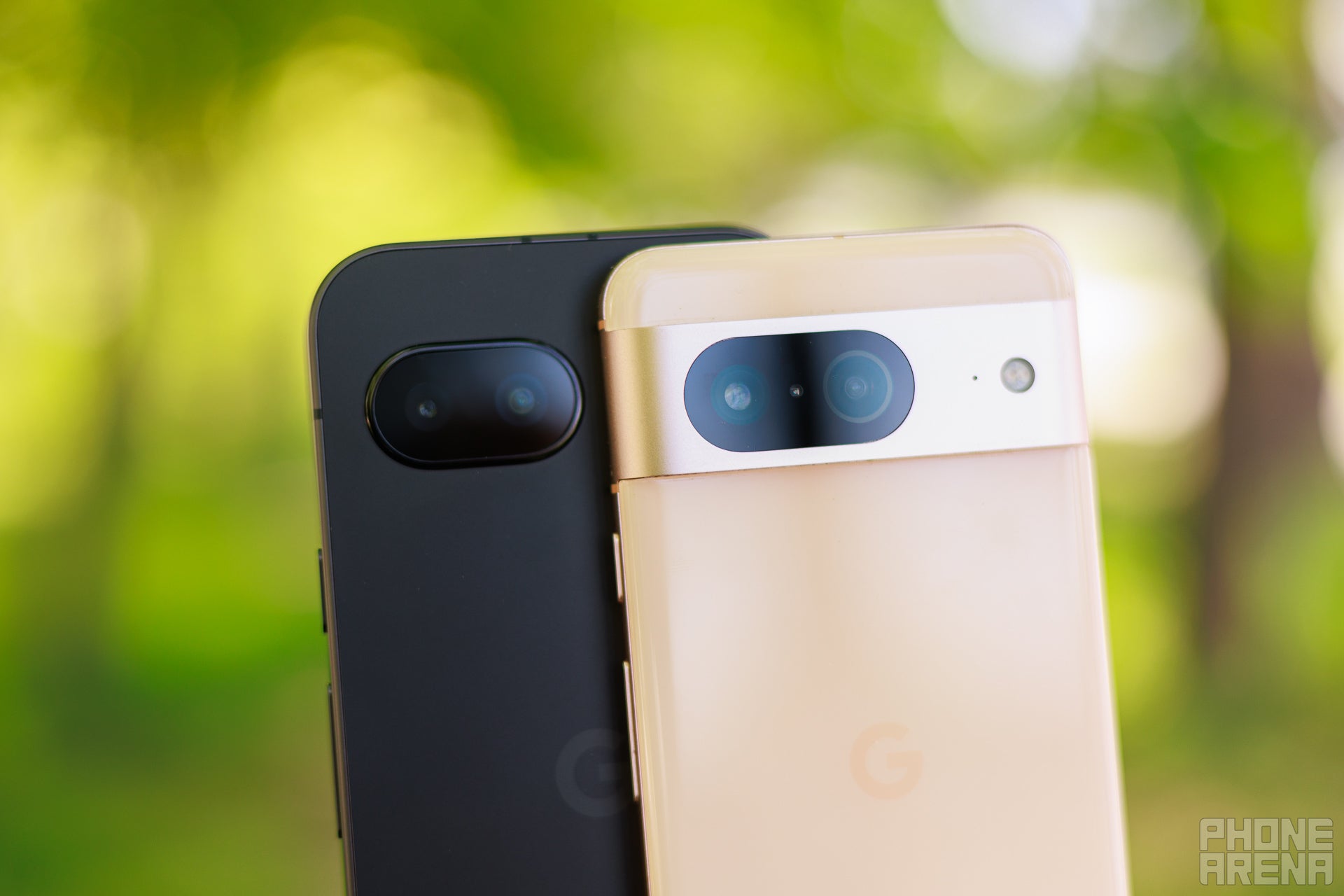
Google is sticking to the tried and tested formula of the dual camera system on its affordable flagship—the Pixel 9a. However, it seems that the company won't be using the same sensors and lenses from the Pixel 8, nor those found on the regular Pixel 9.
The Pixel 9a features a new main camera with a 48MP sensor under a lens with an f/1.7 aperture and resulting in a focal length equivalent of 25mm. This is different from the 50MP sensor inside of the Pixel 8, even though the aperture is the same at f/1.7. The Pixel 8 main camera features a larger sensor (1/1.31" versus 1/2.0" on the 9a), and it also has larger pixels (1.2 µm versus 0.8 µm).
The ultrawide cameras are also different—on the new Pixel 9a we get a new 13MP camera with an f/2.2 and 120-degree field of view. The Pixel 8 uses a 12MP ultrawide but again the sensor is bigger and the aperture and FOV are different.
The Pixel 9a features a new main camera with a 48MP sensor under a lens with an f/1.7 aperture and resulting in a focal length equivalent of 25mm. This is different from the 50MP sensor inside of the Pixel 8, even though the aperture is the same at f/1.7. The Pixel 8 main camera features a larger sensor (1/1.31" versus 1/2.0" on the 9a), and it also has larger pixels (1.2 µm versus 0.8 µm).
The ultrawide cameras are also different—on the new Pixel 9a we get a new 13MP camera with an f/2.2 and 120-degree field of view. The Pixel 8 uses a 12MP ultrawide but again the sensor is bigger and the aperture and FOV are different.
PhoneArena Camera Score:
We did our thorough camera benchmark in the lab and you can see the results above. Long story short, the main camera of the Pixel 8 performs slightly better than the one on the Pixel 9a. This is exaggerated in the video score as well - the Pixel 8 clearly wins there. The other components of the benchmark are more or less comparable.
As you can see in the samples above, the score we measured inside our lab translates to real-life results. The Pixel 8 produces sharper and more detailed images. Not that the Pixel 9a samples are bad, but put side to side, the difference is clear.
There's a softness to the Pixel 9a main camera samples, and the same applies across all the samples, including zoom crops. That said, the ultrawide cameras on both phone seem to perform very similarly, again inline with the lab results. Here's a quick video comparison as well.

Battery Life and Charging
Advantage Pixel 9a
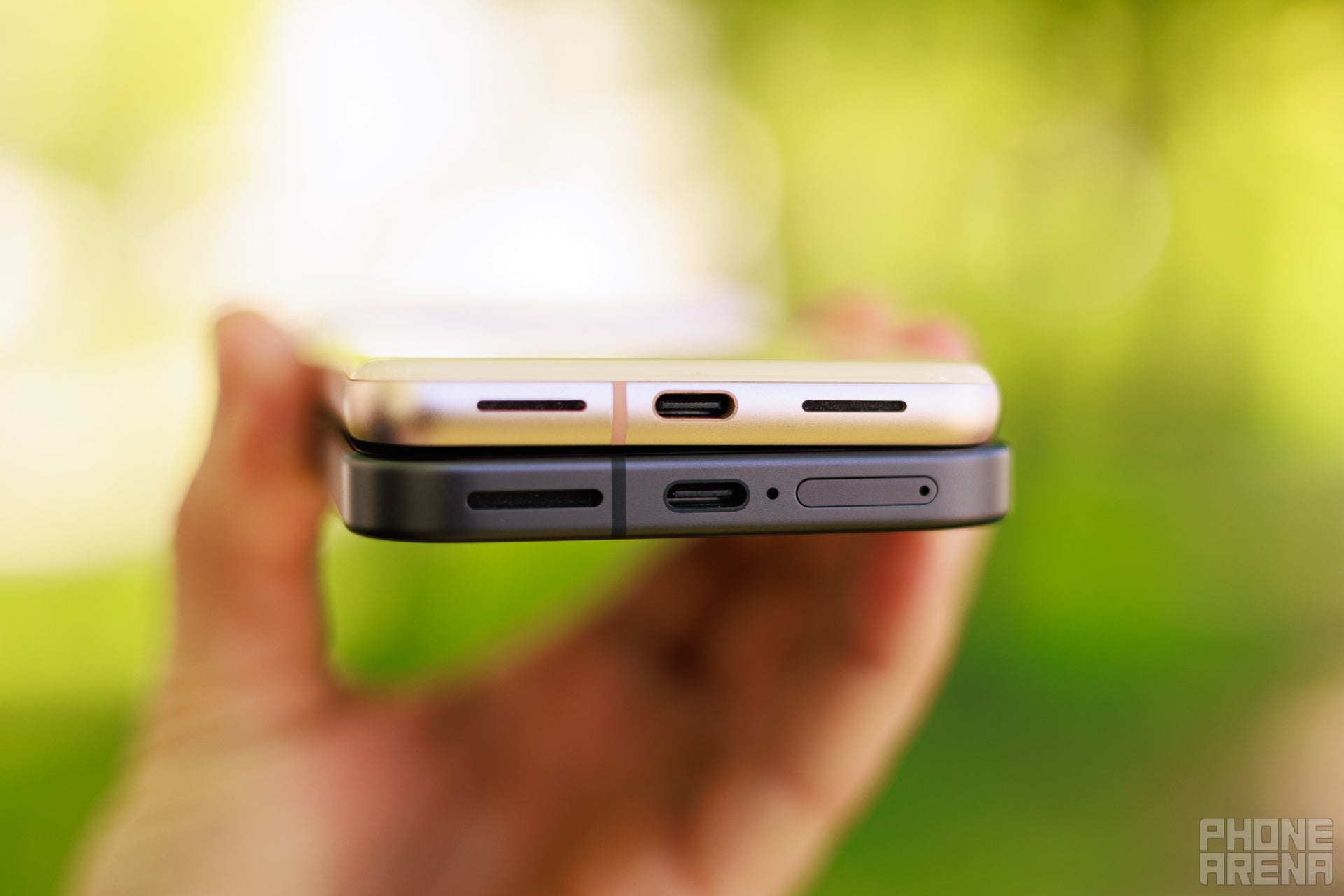
The Pixel 9a comes equipped with a big 5100 mAh battery, around 500 mAh more than the one inside the Pixel 8. Now, this doesn't mean that the Pixel 9a will for sure have better longevity, but it's a strong indicator nonetheless.
Normally, more milliamp hours result in a better battery life, and given the newer and more efficient Tensor G4, things are swaying in favor of the Pixel 9a. The battery tests below reiterate this. The Pixel 9a outscores its flagship cousin and by some margin.
The Pixel 9a manages 8:11 hours total which is up there with the best in the business, and it beat the Pixel 8 by an hour and a half. Granulate results include 4 more hours of web browsing, 1:30 more hours of video streaming, and 3:30 more hours of gaming. Impressive.
PhoneArena Battery and Charging Test Results:
The Pixel 8 uses disappointingly slow charging compared to some charging champions such as Motorola and OnePlus. The phone supports up to 27W of wired charging power and 18W wireless.
In that regard, the old flagship seems to have an advantage over the Pixel 9a, which comes with even slower 23W wired charging and 7.5W wireless.
Specs Comparison
Here's a quick specs comparison between the two phones, for a more detailed Pixel 9a vs Pixel 8 specs comparison, head to our dedicated comparison page on PhoneArena.
| Pixel 9a | Pixel 8 |
|---|---|
| Size, weight 154.7 x 73.3 x 8.9 mm, 186 grams | Size, weight 150.5 x 70.8 x 8.9 mm, 187 grams |
| Screen 6.3" OLED 120Hz | Screen 6.2" OLED 120Hz |
| Processor Tensor G4 4nm | Processor Tensor G3 4nm |
| Versions: 8/128GB 8/256GB LPDDR5 | Versions: 8/128GB 8/256GB LPDDR5 |
| Cameras: 48MP main 13MP ultra 13MP front | Cameras: 50MP main 12MP ultra 12MP front |
| Battery: 5100 mAh | Battery: 4575 mAh |
| Charging: USB-C 23W wired 7.5W wireless | Charging: USB-C 27W wired 18W wireless |
Also read:
Summary
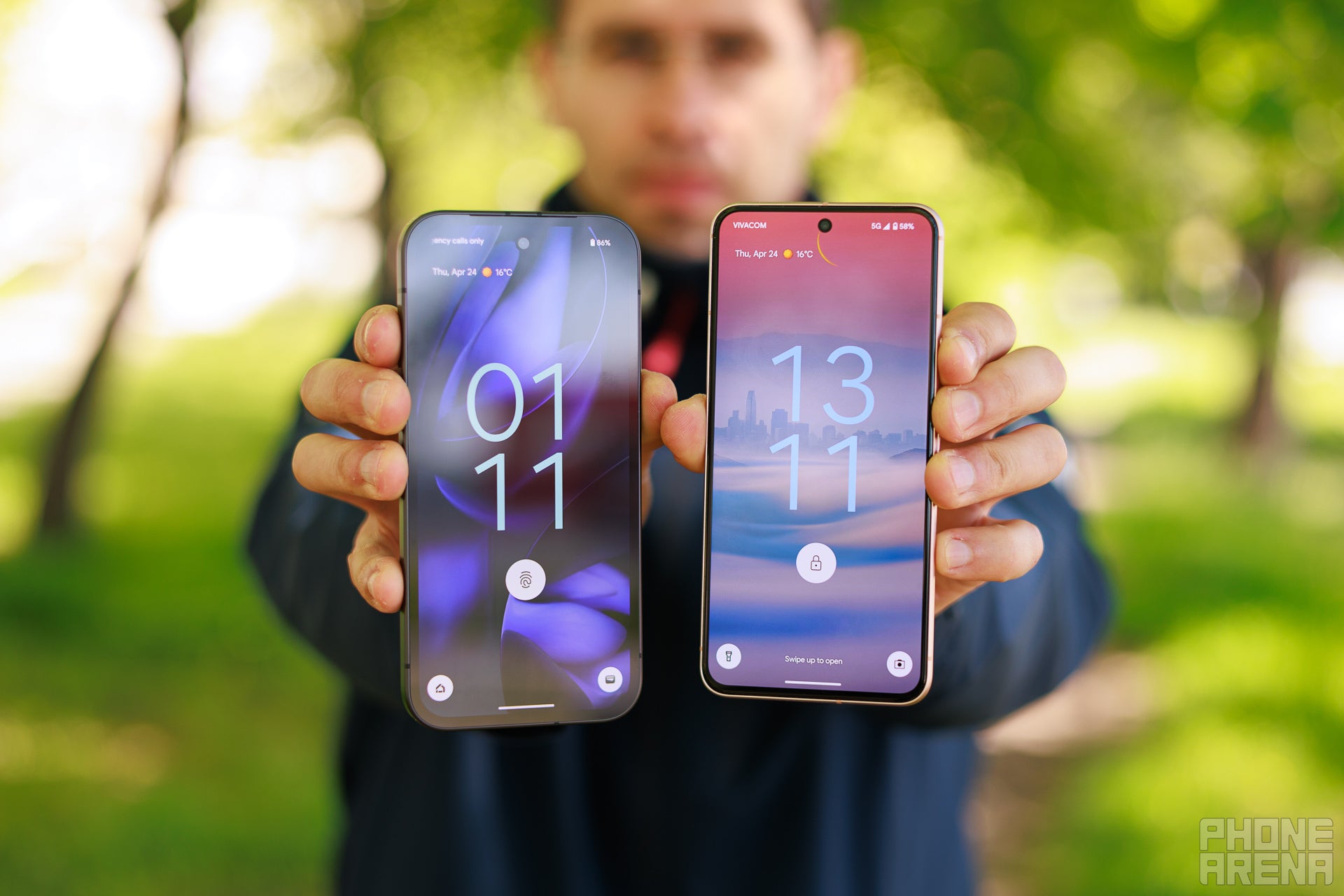
The Pixel A-series has been tremendously popular devices and for good reasons. These phones have been so good that many people consider buying one of the A-series rather than a regular Pixel flagship. This seems to be the case with the Pixel 9a.
The previous Pixel 8a model already wounded the regular Pixel 8 gravely, and the recently launched Pixel 9a will finish the deed. Google stuck to the $499 price tag for the Pixel 9a, and there is little to no reason for people to get the more expensive Pixel 8, even on a deal.
The previous Pixel 8a model already wounded the regular Pixel 8 gravely, and the recently launched Pixel 9a will finish the deed. Google stuck to the $499 price tag for the Pixel 9a, and there is little to no reason for people to get the more expensive Pixel 8, even on a deal.
The latter features older silicon, a better main camera, a smaller battery, and the same software gimmicks as the Pixel 9a.
So, if you want an affordable Pixel that will last long, the Pixel 9a is a better choice. If you've already purchased the Pixel 8, there's no reason to upgrade to the Pixel 9.
Follow us on Google News









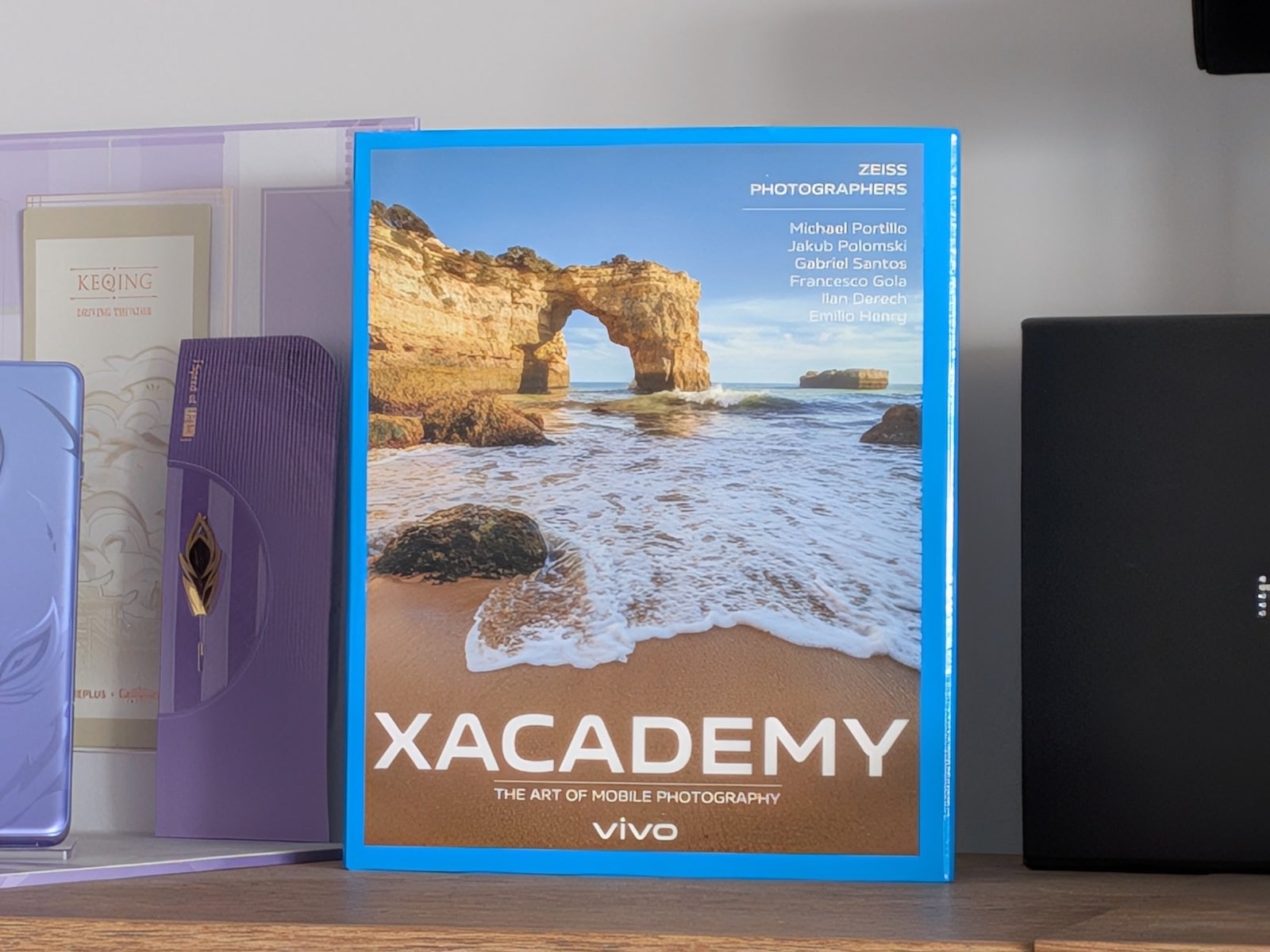
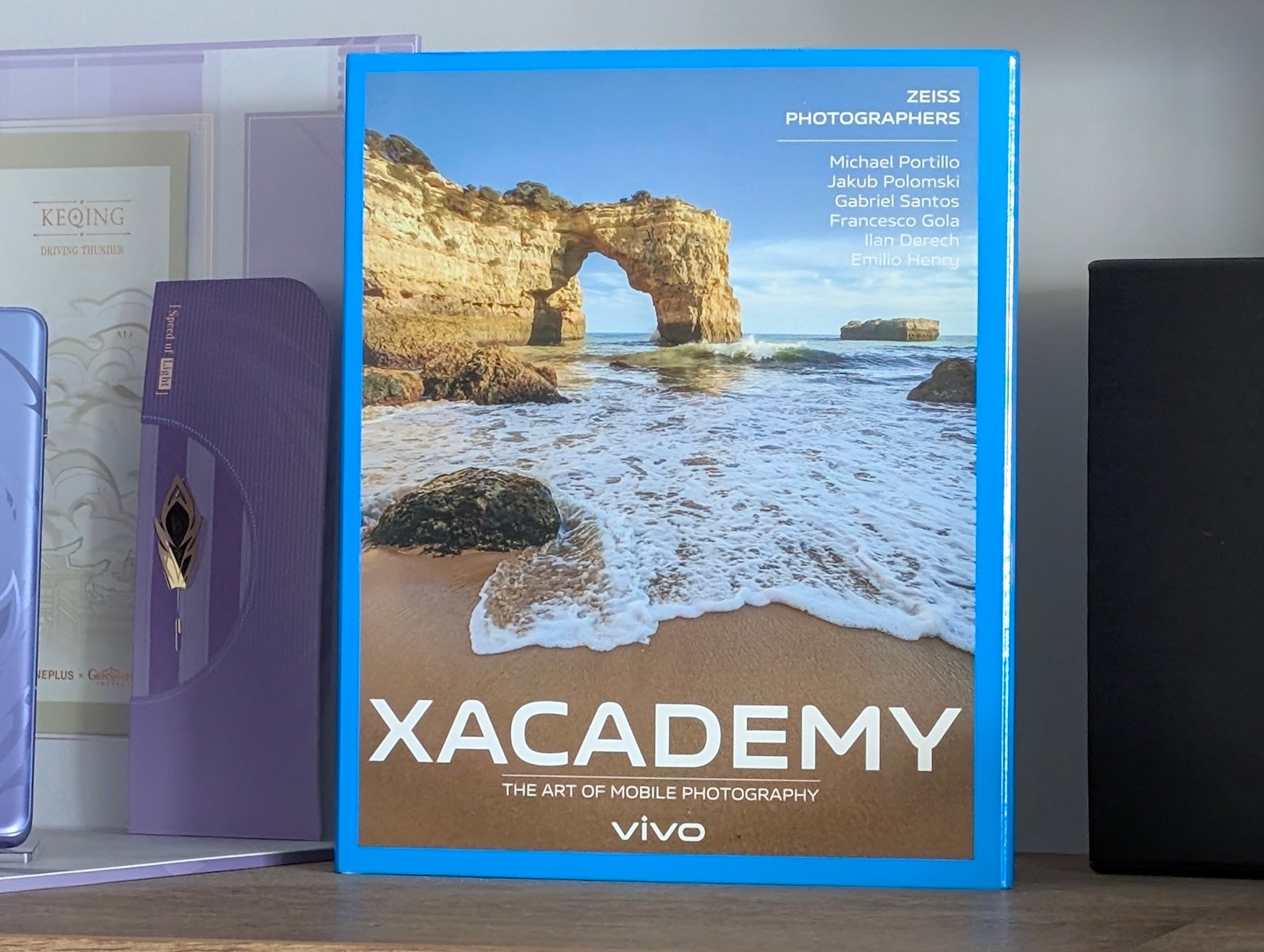

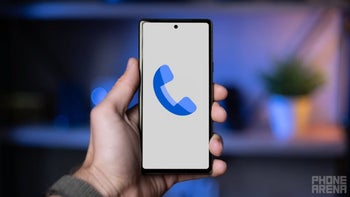
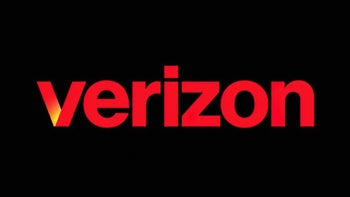

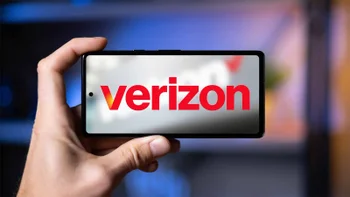

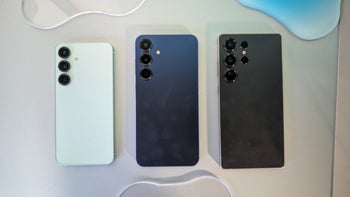

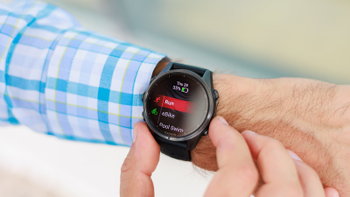
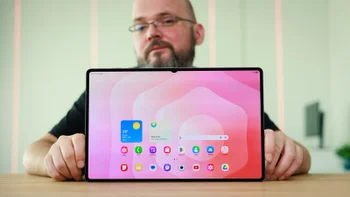
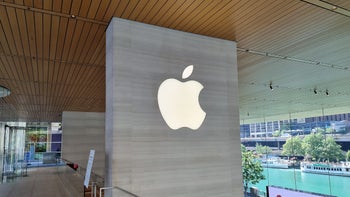
Things that are NOT allowed:
To help keep our community safe and free from spam, we apply temporary limits to newly created accounts: